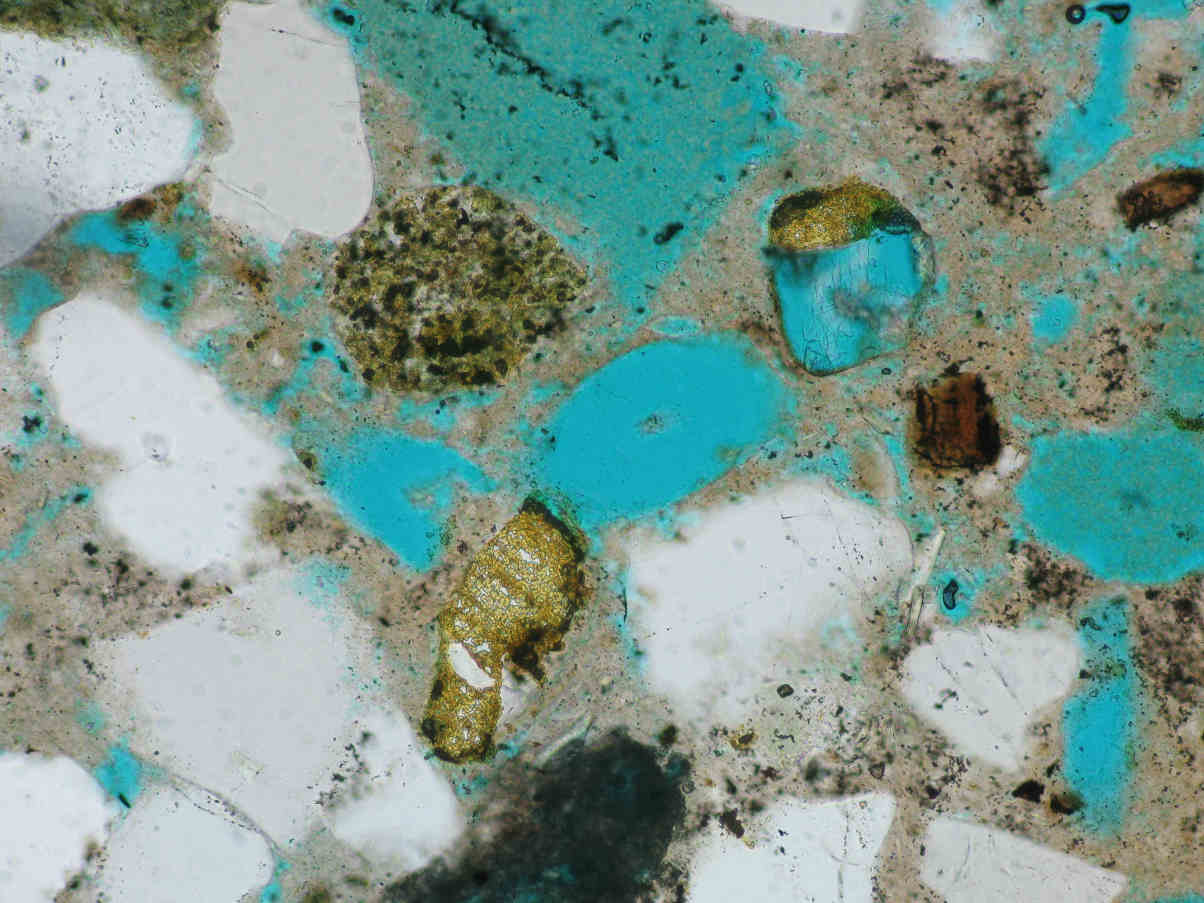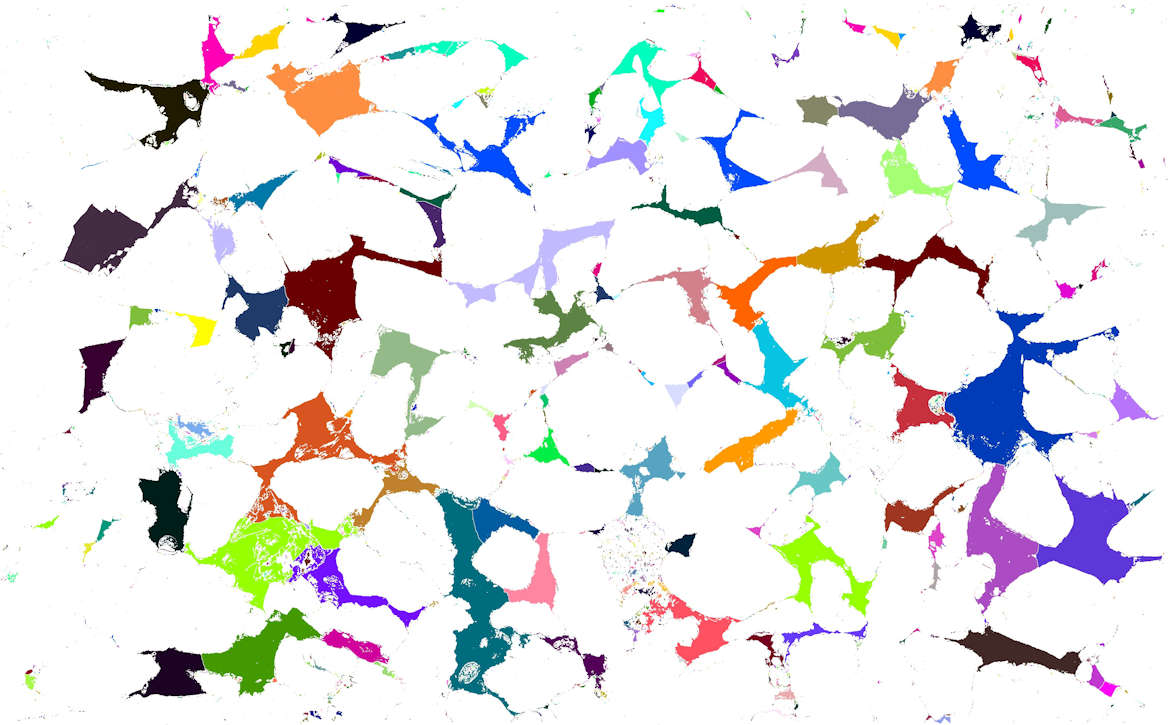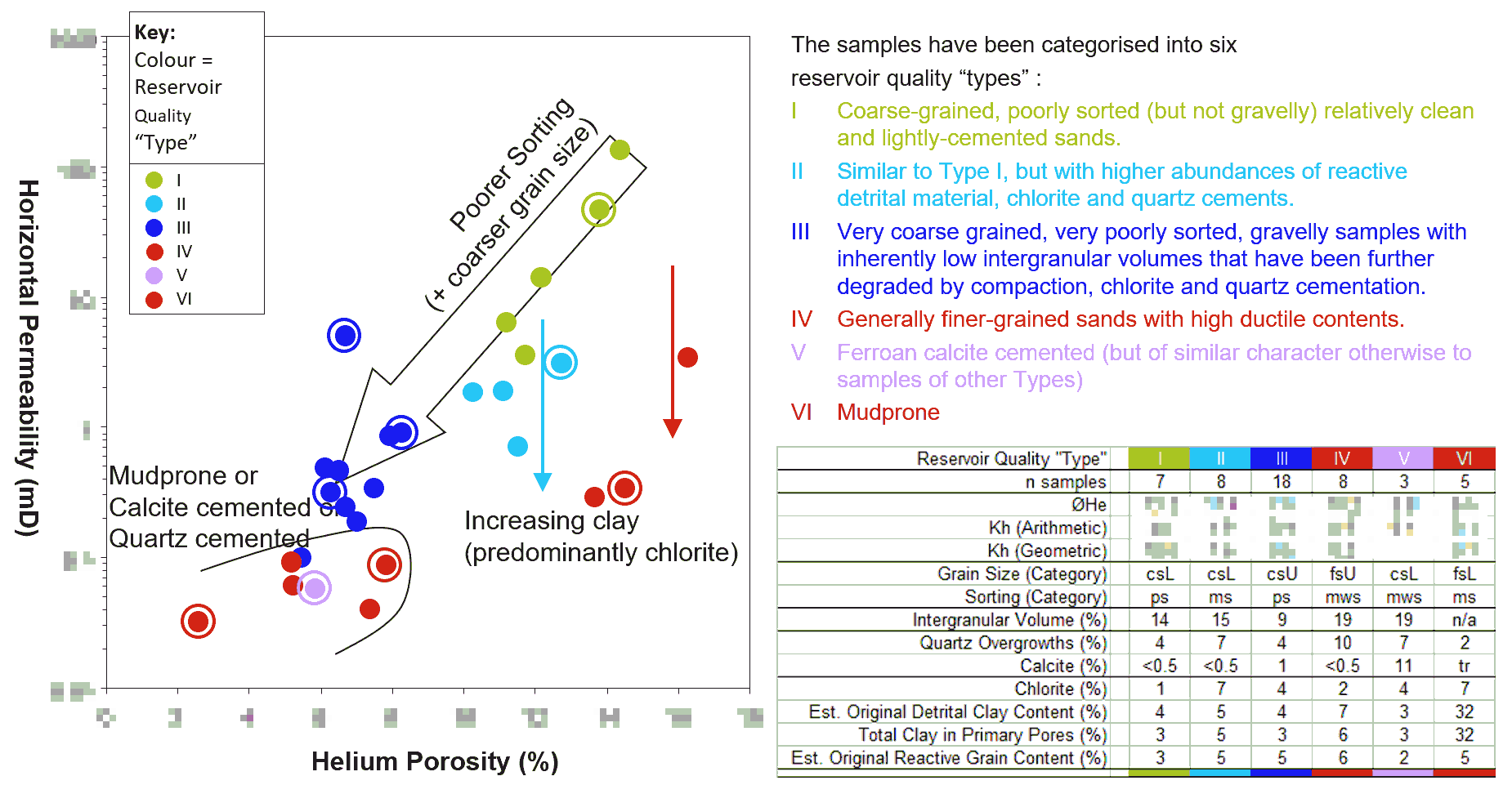Overview
![]() Petrographic characterisation of sandstone textures and mineralogies leads naturally into provision of a detailed understanding of sandstone pore systems and ultimately reservoir quality.
Petrographic characterisation of sandstone textures and mineralogies leads naturally into provision of a detailed understanding of sandstone pore systems and ultimately reservoir quality.
We provide data and observations on:
- pore volumes
- the origin of pores (primary – secondary – resurrected primary, and, where appropriate, the definite or likely nature of the pahses dissolved to generate porosity),
- pore sizes,
- pore shapes, and
- pore connectivities.
We also provide interpretation on pore system evolution (linked to diagenetic and burial histories).
For a more quantitative understanding, pore image analysis of electron microscope images are used to derive data on pore sizes and volumes, which are particularly useful in situations where more conventional approaches cannot be applied (e.g. cuttings samples).
Pore System Characterisation
Pore systems are characterised both qualitatively (using petrographical [thin-section and/or SEM] descriptions), and more quantitatively (modal analysis, and pore image analysis). This characterisation captures information on the origins of pores and their sizes, shapes, connectivity and volumes.


Controls on Porosity and Permeability
The petrography observations about sediment depositional textures and mineralogies, their diagenetic overprints, and present day pore systems are integrated with routine core analysis data (where available) to assess the relative impact of the individual characteristics on present day porosities, permeabilities and reservoir quality.

Reservoir Quality Prediction
A detailed understanding of the detrital and diagenetic characteristics of the sediments, coupled with detailed pore system data, allows us to provide a full appraisal of the controls on reservoir quality. Once the parameters that govern porosity and permeability have been elucidated, they can be up-scaled by integration with sedimentological / facies models, burial histories, and reservoir models, in order to predict reservoir quality in undrilled locations. This upscaling would consider aspects such as: the likely lateral variations in depositional facies and the impact this has on sediment depositional texture and mineralogy; differences related to burial depth and/or uplift that will affect compaction and diagenesis; proximity to structural features (faults / access to basinal / mineralising fluids); and filling histories.
